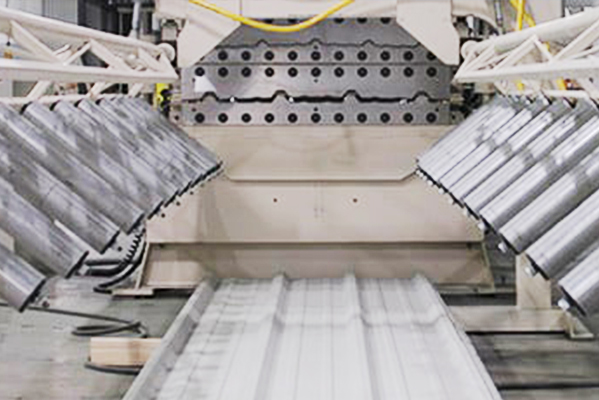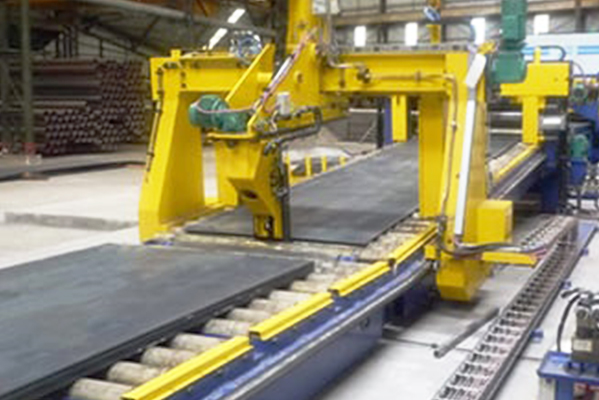Navigation Menu
Contact Us
- Email:
- info@wxavatar.com
- Address:
- Yurong Village, Yuqi Street, Huishan District, Wuxi, China.
Release Date:Mar 24, 2025 Visit:52 Source:Roll Forming Machine Factory
What is Stacking Packaging Equipment?
Stacking packaging equipment is a type of automated machinery used in manufacturing and logistics to organize, stack, and package products efficiently. This equipment plays a critical role in streamlining production lines, reducing labor costs, and ensuring the safe and organized handling of goods. It is widely used in industries such as food and beverage, pharmaceuticals, electronics, and consumer goods. This article explores the functionality, types, benefits, and applications of stacking packaging equipment.
Functionality of Stacking Packaging Equipment
Stacking packaging equipment is designed to handle products at the end of a production line, arranging them into organized stacks or layers for packaging or palletizing. The equipment typically performs the following functions:
1.Product Alignment: Ensures products are properly aligned before stacking.
2.Stack Formation: Arranges products into stable stacks or layers based on predefined patterns.
3.Transfer and Conveyance: Moves stacks to the next stage of the packaging process, such as wrapping or palletizing.
4.Integration with Other Systems: Works seamlessly with other packaging machinery, such as shrink wrappers, case packers, and palletizers.

Types of Stacking Packaging Equipment
Stacking packaging equipment comes in various types, each suited for specific applications and product types. Some common types include:
1.Robotic Stackers: Use robotic arms to pick and place products into stacks. These are highly flexible and can handle a wide range of product shapes and sizes.
2.Case Stackers: Designed to stack packed cases or boxes onto pallets or conveyors.
3.Bottle Stackers: Specialized for stacking bottles or containers, often used in the beverage industry.
4.Bag Stackers: Handle and stack bags, such as those containing grains, powders, or other bulk materials.
5.Layer Stackers: Create uniform layers of products, which are then transferred to pallets or packaging lines.
6.Vertical and Horizontal Stackers: Vertical stackers arrange products vertically, while horizontal stackers arrange them in horizontal layers.
Benefits of Stacking Packaging Equipment
1.Increased Efficiency: Automates the stacking process, significantly speeding up production lines and reducing manual labor.
2.Improved Product Safety: Ensures products are stacked securely, minimizing the risk of damage during handling or transportation.
3.Space Optimization: Creates compact and stable stacks, optimizing storage and transportation space.
4.Consistency and Precision: Delivers uniform stacks, reducing errors and ensuring high-quality packaging.
5.Labor Cost Reduction: Reduces the need for manual stacking, lowering labor costs and minimizing workplace injuries.
6.Versatility: Can handle a wide range of products, from fragile items to heavy containers.
7.Integration Capabilities: Easily integrates with other packaging and palletizing systems, creating a seamless production process.
Applications of Stacking Packaging Equipment
Stacking packaging equipment is used across various industries, including:
1.Food and Beverage: Stacking bottles, cans, cartons, and packaged food items.
2.Pharmaceuticals: Handling and stacking boxes of medicines, medical devices, and other healthcare products.
3.Consumer Goods: Organizing and stacking household products, electronics, and appliances.
4.Logistics and Warehousing: Preparing stacks of boxes or cases for palletizing and shipping.
5.Construction and Manufacturing: Stacking heavy or bulky items, such as bricks, tiles, or automotive parts.

Considerations When Choosing Stacking Packaging Equipment
When selecting stacking packaging equipment, businesses should consider the following factors:
1.Product Type and Size: Ensure the equipment can handle the specific dimensions, weight, and fragility of the products.
2.Production Volume: Choose equipment that matches the required output capacity.
3.Integration Requirements: Verify compatibility with existing packaging and production lines.
4.Floor Space: Assess the available space in the facility to accommodate the equipment.
5.Budget: Balance the initial investment with long-term cost savings and efficiency gains.
6.Maintenance and Support: Consider the ease of maintenance and availability of technical support.
Conclusion
Stacking packaging equipment is a vital component of modern manufacturing and logistics, offering numerous benefits such as increased efficiency, improved product safety, and reduced labor costs. By automating the stacking process, businesses can enhance their production lines, optimize space, and ensure consistent, high-quality packaging. When choosing stacking packaging equipment, it is essential to consider factors such as product type, production volume, and integration requirements to select the most suitable solution for your needs. With the right equipment, businesses can streamline their operations and stay competitive in today’s fast-paced market.